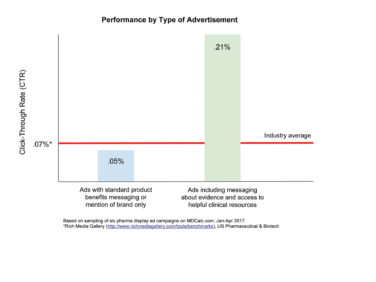Here’s the fact: since the pandemic, launch revenues in pharma have declined. Doesn’t matter if it is specialty or primary care whether it’s the U.S. or the rest of the world, they’ve declined. The question is: What do you do to maximize the success of your launch?
After a review of the professional literature and great advice from several colleagues in pharma, here are several things I would recommend.
Macroeconomic Factors
The pandemic really changed the game, driven by several disruptions that changed physician and patient behavior forever.
Long patient journeys, seen in many rare diseases and oncologic tumors, were disrupted enough that it will take years to catch up. A few stark statistics from the cancer literature are enough to make me more than a little bit nervous:
- The number of reported cancer cases recorded in the National Cancer Database declined by 14.4% in 2020.1 That represents 200,000 fewer patients diagnosed or treated for their cancers.
- The National Cancer Institute predicted an additional 10,000 deaths over 10 years in the United States from breast and colorectal cancers due to reduced access to cancer diagnosis and treatment in the early months of the pandemic.2
On the other hand, telemedicine surged dramatically during the pandemic, and continues to make inroads into patient care due to improved convenience for patient and practitioner alike.
Prior to the pandemic, the use of telemedicine was growing, but only about 0.1% of claims for care were via telemedicine. The pandemic forced Congress and other legislative and regulatory bodies to open up the avenues for telemedicine, and in 2020 fully 23.6% of claims were billed via telemedicine. And once a channel is opened, it remains so.
While care is returning to a new normal, around 5% of care was delivered via telemedicine in 2021.3 However, research from IQVIA suggests that physicians who are comfortable treating and managing patients online are reluctant to start a new drug online.4 This an instance where technology is not helping our industry.
Physicians are also increasingly selling their practices to integrated delivery networks (IDNs) and hospitals. This started after the passage of the Affordable Care Act (ACA) and accelerated post pandemic. A study by Avalere Health showed that nearly three out of four physicians are employed by hospitals, health systems, and other corporate entities.5 So what? Well, it’s still very important to reduce the burdens of therapy on both patients and providers, but health systems, who evaluate formularies, are imposing more and more focus upon reducing the overall burden on their staffs as well.
Two examples of note: multiple health systems have selected a longer-acting version of an anti-complement agent for paroxysmal nocturnal hemoglobinuria (PNH) versus its shorter-acting alternative, in part to reduce the “chair time” of patients receiving infusion therapy. Similarly, a key reason for the broad acceptance of aflibercept for the treatment of wet age-related macular degeneration (AMD) is the much longer time between injections versus other anti-vascular endothelial growth factor (VEGF) therapies.
Many posited that direct to consumer (DTC) was dying…but that is not what’s happening. Research from Nielsen showed that DTC media spends in pharma have grown almost 17% since 2018. Brands such as Tepezza, Jardiance, and Wegovy benefited greatly by involving the patient in the journey of battling their diseases. Importantly, digital spend in 2022 grew to over $1 billion, with a 45% increase from 2021 to 2022.6 Practically speaking, this has become a key future spot for conversations between pharma and their patients.
Getting Practical
In writing this article, I relied heavily upon my many friendships in the industry. Here are several pieces of advice gleaned from years of experience in the trenches.
First things first: remember, if you know one drug company, you know one drug company. While commonality can be found in our business, there’s no such thing as a one size fits all. Take everything with a grain of salt and apply the insights with your experience with your own organization.
From several senior marketers with more than a decade of experience in pharma, a common call to action: Watch out for overly optimistic forecasting, often driven by a lack of alignment between marketing, sales, insights, and senior management. Also watch out for startups as there is enormous pressure on FDA approval, but paradoxically less scrutiny on how the first 90 days of sales go. A clear understanding of how well your brand will be accepted by new customers is obviously critical but remember that clinicians are a lot less impressed by new mechanisms of action and unclear clinical endpoints than investment advisors are. In my experience, enormous respect must be paid to the pre-launch market research that assesses the impact your brand will make on the market. Those insights are irreplaceable.
A corollary to this finding is that a baton must be passed from marketers to sales professionals, ensuring that the sales team understands the tools available to them, are incentivized regarding sales goals rather than demoralized, and truly understand the patient journey. Oftentimes, that insight lies with marketing and medical affairs, and sales training isn’t looped in to make sure these critical insights are shared. It’s an old adage, but a true one. It really does take a village to engender a successful drug launch.
Finally, while remembering that every company is different, many groups are not made accountable for their actions in a launch, thereby creating organizational frictions that can negatively impact early sales. This is particularly important in organizations that already have a substantial portfolio of products that are successful.
While we’re speaking of corporate silos, in some organizations, U.S. marketers can develop “not invented here” mentalities and fail to learn from the lessons of their colleagues outside the U.S.—just one example of how silos are deadly to launch. The same is obviously true for rest of world (ROW) affiliates, although this group tends to be better as they have fewer resources to leverage in a launch.
Be Ready
In many organizations, the need to “be ready by a date” supersedes “be ready.” Someone in the organization needs to be certain that everyone is functionally ready for launch and be willing to shift resources to make that so. While it is almost cliché to mention, the utility of a “war game” or launch summit including all the relevant players might seem trivial but can isolate areas where focus needs to be applied to ensure a successful launch.
Folks from larger pharma companies, and suppliers that support them, had a different caution. Be wary of a culture of “safe ideas.” Responsible promotion within the limits of medical/legal/regulatory has its time and place, but we are in the business of making people better after all. A launch is by its very nature new, and “safe” ideas dilute the power of new. Marketing teams should embrace a hypotheses-based approach, testing a broad range of strategic ideas early, to eliminate blind spots later. For me, the North Star is always patient outcomes. If an approach is focused upon something other than better patient outcomes, suspect it.
As we think about how to effectively launch a product from the regulatory vantage, another important point to ponder is endpoints can sometimes be difficult for clinicians to interpret. The measure that is used to communicate effectiveness needs to be useful and convincing to prescribers. It’s so frustrating when FDA approves a methodology that practicing physicians, who will ultimately prescribe the product, don’t understand the measurement tool well enough to buy it. If that’s the case for your brand, early and substantial disease state education is essential.
A corollary to this thought: Managed care has begun developing disease management protocols for the treatment of chronic diseases that can be treated by drug therapies.7 The intent is to improve outcomes and reduce costs such as downstream surgery or other costly treatments. It’s important for commercial marketers to be completely familiar when these protocols are in place, so that Phase III studies are designed to facilitate thoughtful inclusion in a formulary.
A final thought: the best launches are about making the lives of our patients better. It’s essential to understand the needs of the patients, and the best way to do this is by partnering with advocacy organizations. Done well, these efforts give marketers and researchers access to patients, a better understanding of how they cope with their diseases and seek to address their health problems, and a ready avenue for communication.
References:
2. https://www.ncbi.nlm.nih.gov/pmc/articles/PMC9564768/#B25-ijerph-19-12470.
3. https://www.ncbi.nlm.nih.gov/pmc/articles/PMC9035352.
4. https://www.iqvia.com/library/white-papers/overcoming-pharmas-launch-performance-problem.
6. https://www.mmm-online.com/home/channel/7-day-supply/has-media-in-housing-found-a-home-in-pharma.
7. https://dash.harvard.edu/bitstream/handle/1/8965565/ccarson.pdf?isAllowed=y&sequence=1.










